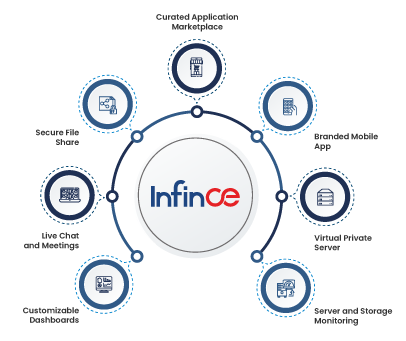6 Tips to Ensure Secure File Transfers Within Your Organization
To survive tough market conditions like dynamic consumer trends and rising competition, businesses continuously invest to set up new and innovative digital frontiers that enable them to offer superior end-user experiences. The movement of enterprise systems to the cloud is perhaps the biggest driver of the digital transformation of today’s business. However, the growth of digital capabilities has resulted in more volumes of data generated across the operational landscapes of businesses. This data includes everything from your environment’s conditions, to sensitive customer data. With a large number of employees deployed to work on this data for delivering more valuable insights, a key security challenge that comes into the picture for enterprises is file sharing. There is so much focus on this area that studies predict a market size of over USD 10.94 billion for enterprise file sharing and synchronization by the year 2023.
So how can your organization ensure that file sharing is seamlessly enabled for your workforce while safeguarding data integrity and protection requirements? Here are 6 tips you can consider implementing in your organization
The first step in creating a secure file sharing environment within your organization is to make sure that everyone knows the risks involved when confidential information goes out of their business systems and into the wrong hands. Surveys have shown that over 95% of staff working in an office can access data from their organization which they do not actually require.
So, to ensure that sensitive information doesn’t go out of your organization into the wrong hands, employees need to be constantly educated about the fallouts that occur due to data leaks and also how to efficiently share official files without inviting risky security threats. Carry out periodic learning sessions for all employees on best practices in file sharing, invite experts in to deliver lessons on file-sharing conventions and take precautions to ensure that your employees do not commit mistakes that turn up as big blows with regards to sensitive information leaking during file sharing.
Security threats evolve by the minute if you look at what is happening in the market today. Leading solution providers for your business operational systems like CMS and other file management systems often release security updates every now and then to counter newly identified threats. It is important for you to keep these systems up to date and incorporate suggestions and recommendations given by service providers from time to time to keep out security threats and prevent mishandling of sensitive data during file transfer or exchange operations.
Related Reading: What’s Involved In Renewing An SSL Certificate?
3.Implement a holistic security management system
While most organizations have some form of security assurance applications deployed across their IT landscape, it often has supervisory control over just a few areas like email or FTP alone. When you select a security solution, it is wise to opt for an integrated suite of security systems that offers comprehensive coverage for all your enterprise information access and exchange points like email, file management, content management systems, hardware ports, and so on.
This will offer effective monitoring of all enterprise communication points and will guarantee more secure file sharing mechanisms and prevent leakage of sensitive information. Such solutions also offer permission-based access control for enterprise information repositories with robust tracking of who accesses what at which time. This will prevent any deliberate attempts for data breaches due to the fear of being exposed during regular security audits.
4.Use cloud-based systems for file exchange
Eliminate the
Related Reading: Mitigating The Top 5 Challenges Of Cloud Integration
5.Promote encryption techniques
The best way to ensure that sensitive information is protected during file sharing is by encrypting such information. Be it on online file exchange tools or hardware devices, there are several solutions that encrypt information and make it unreadable for any unauthorized party who tries to access the data at any time.
Powerful algorithms can safeguard data integrity by ensuring that only stakeholders with the right encryption key can unlock sensitive organizational data and this data access is properly logged and monitored by the enterprise security software deployed across your business systems. This will ensure that there is accountability for every file-sharing activity that goes around in your business and can deter insecure practices to a great extent.
6.Conduct periodic security audits
It is important to review your organization’s data and information flow system on a regular basis to keep track of incidents that are dangerous to maintaining the integrity of sensitive information. Check back on channels and workflows that have reported data breaches in the past due to file-sharing activities and see that these scenarios were never repeated and security policies are strictly followed. All relevant metrics related to data flowing throughout the organization need to be reviewed periodically to identify any unusual outflow of data through any channel. Such a practice will deter any attempt to deliberately misuse organizational data and ultimately avoid repercussions from the customer’s side.
While the above tips can empower your workforce to seamlessly and securely facilitate file transfer activities within your enterprise, having a holistic cloud-based enterprise content and information management system can eliminate these risks to a great extent. This is where Infince can be the game-changer for your business’s digital ambitions. With integrated security, powerful information access controls, and seamless content management, your data stays secure with Infince, while you deliver results for your customers. Get in touch with us to know more.







